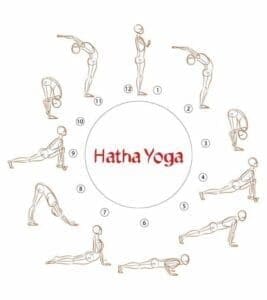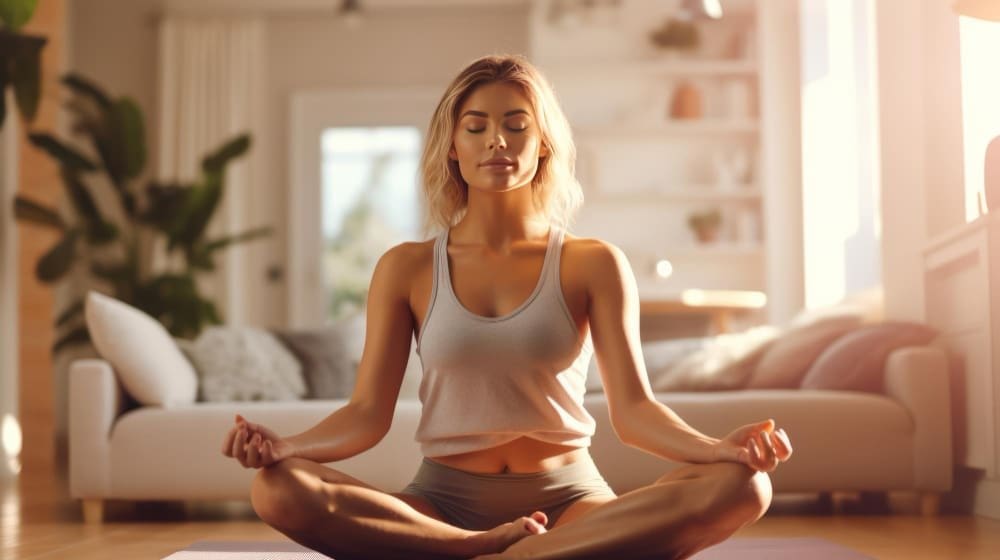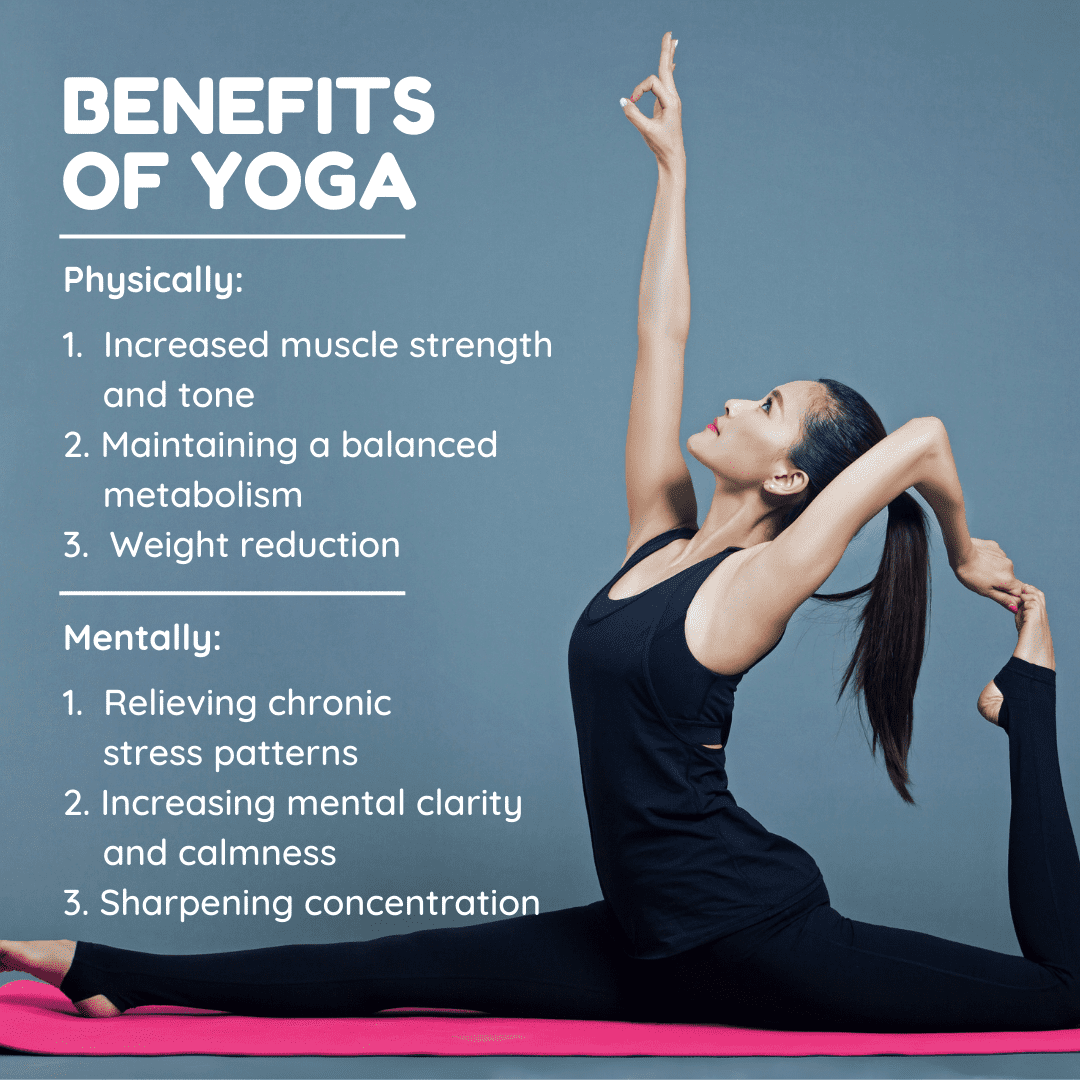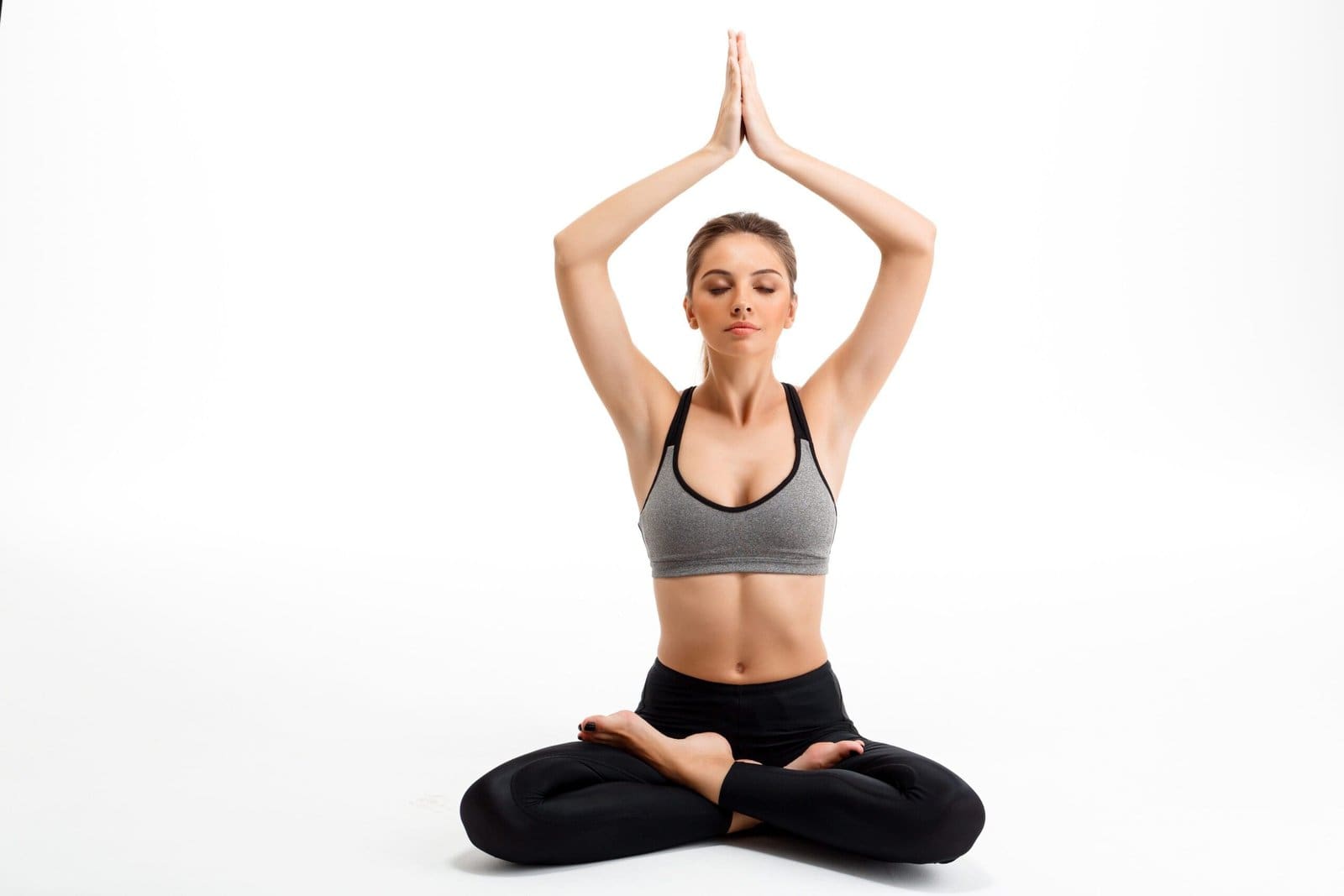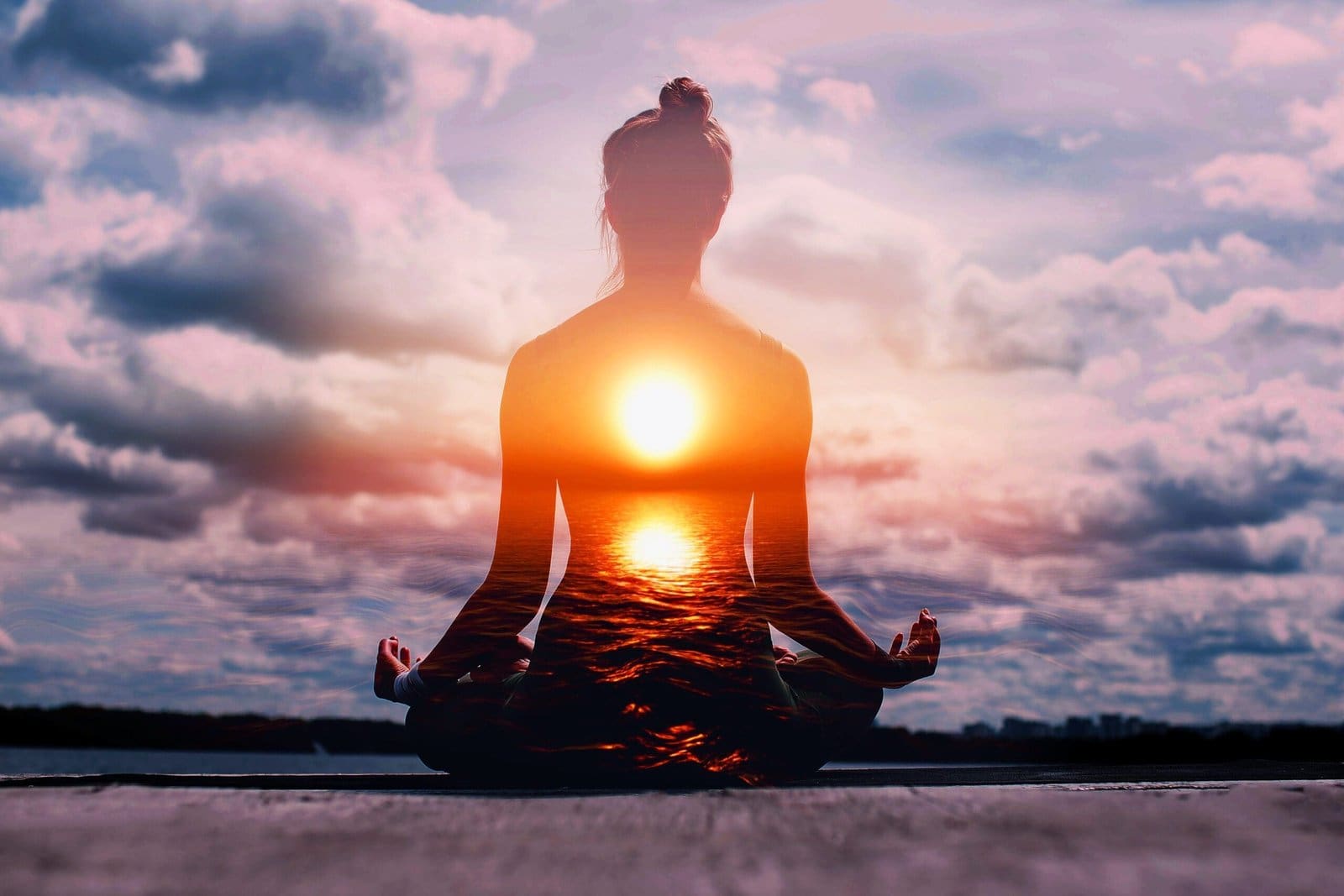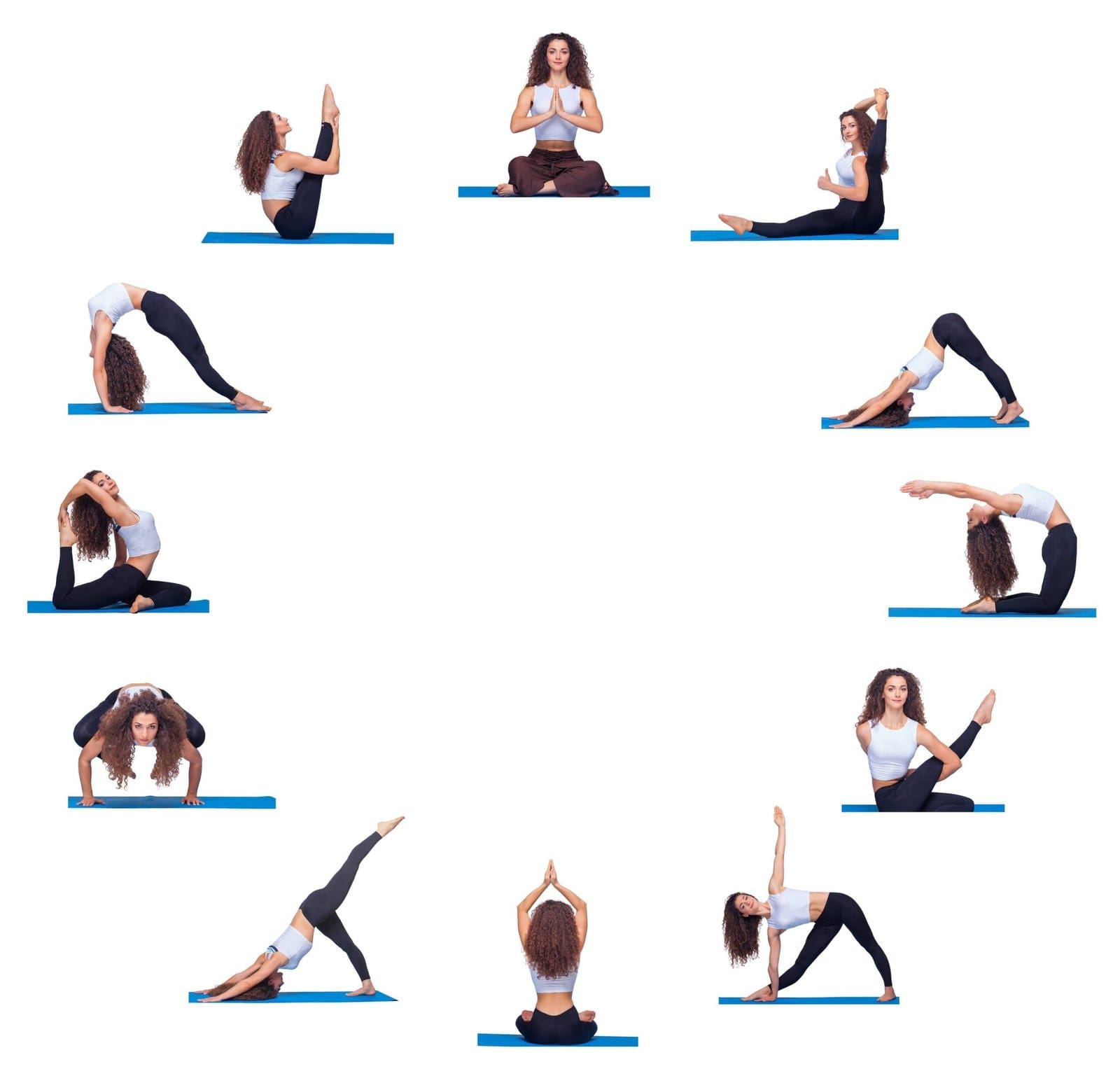Hatha Yoga: A Beginner's Guide to Finding Balance and Inner Peace
Welcome to the world of Hatha Yoga, a practice that goes beyond the physical aspects of exercise and delves into the realm of finding balance and inner peace. Whether you’re a complete beginner or someone looking to deepen their understanding of yoga, this guide will take you on a journey of self-discovery and transformation. Hatha Yoga, with its gentle and slow-paced movements, is the perfect introduction to the world of yoga. It focuses on harmonizing the mind, body, and spirit through a combination of asanas (postures), pranayama (breathing techniques), and meditation. By practicing Hatha Yoga, you will not only improve your strength, flexibility, and overall physical well-being, but you will also learn to quiet the mind, reduce stress, and cultivate a sense of inner calmness. So, grab your mat, find a quiet space, and let’s embark on this transformative journey together. Get ready to unlock the power within and discover a whole new level of balance and serenity through the practice of Hatha Yoga.
What is Hatha Yoga?
Hatha Yoga is a traditional form of yoga that originated in ancient India. The word “Hatha” is derived from the Sanskrit words “ha” meaning sun and “tha” meaning moon, representing the balance between opposing forces. Hatha Yoga aims to find balance and harmony between the physical body and the mind through a series of asanas (postures), pranayama (breathing techniques), and meditation.
In the practice of Hatha Yoga, the emphasis is on slow and controlled movements, allowing practitioners to connect with their breath and cultivate mindfulness. Unlike other forms of yoga that may focus on fast-paced movements or intense workouts, Hatha Yoga offers a more gentle and accessible approach, making it suitable for all levels of fitness and flexibility.
The Origins and Philosophy of Hatha Yoga
Hatha Yoga has its roots in ancient Indian philosophy and is believed to have been developed by the sage Matsyendranath, who was a disciple of Lord Shiva. The practice was later refined and popularized by Swami Svatmarama in the 15th century with the publication of the Hatha Yoga Pradipika, a classical text that serves as a guide to Hatha Yoga.
The philosophy of Hatha Yoga is based on the concept of balancing the opposing energies within the body, known as the “ha” and “tha” energies. These energies are represented by the sun and moon, masculine and feminine, and active and passive forces. By harmonizing these energies, practitioners can achieve a state of equilibrium and inner peace.
Hatha Yoga also incorporates the principles of mindfulness, self-discipline, and self-awareness. It encourages practitioners to be present in the moment, to observe their thoughts and emotions without judgment, and to cultivate a sense of compassion and acceptance towards themselves and others.
Benefits of Practicing Hatha Yoga
The practice of Hatha Yoga offers numerous benefits for both the body and mind. From physical strength and flexibility to mental clarity and emotional well-being, the benefits of Hatha Yoga are truly transformative.
On a physical level, practicing Hatha Yoga helps to improve strength, flexibility, and posture. The various asanas (postures) in Hatha Yoga work to stretch and strengthen different muscle groups, promoting better alignment and balance in the body. Regular practice can also help to increase blood circulation, improve digestion, and boost the immune system.
In addition to its physical benefits, Hatha Yoga is also known for its ability to calm the mind and reduce stress. The combination of slow movements, deep breathing, and meditation helps to activate the parasympathetic nervous system, which is responsible for the body’s relaxation response. This can lead to a reduction in anxiety, improved sleep quality, and an overall sense of well-being.
Furthermore, practicing Hatha Yoga can also have a positive impact on mental and emotional health. It can help to increase self-awareness, enhance concentration and focus, and cultivate a sense of inner peace and contentment. By learning to observe and detach from negative thoughts and emotions, practitioners can develop a more positive outlook on life and build resilience in the face of challenges.
Getting Started with Hatha Yoga – Essential Equipment and Clothing
To get started with Hatha Yoga, you don’t need much equipment or fancy clothing. The most important thing is to have a comfortable and non-slip yoga mat that provides enough cushioning and support for your practice. This will help to prevent any discomfort or injuries while performing the asanas.
As for clothing, choose something that allows for a full range of motion and is breathable. Opt for loose-fitting or stretchy clothes that won’t restrict your movements. Avoid wearing anything too tight or constricting, as this can hinder your ability to fully relax into the poses.
It’s also a good idea to have a small towel nearby to wipe away any sweat and a water bottle to stay hydrated throughout your practice. Remember, Hatha Yoga is a gentle and slow-paced practice, so there’s no need to push yourself too hard or overexert. Listen to your body and honor its limitations.
Basic Hatha Yoga Poses for Beginners
Now that you have your mat and comfortable clothing, let’s dive into some basic Hatha Yoga poses that are perfect for beginners. These poses will help you build strength, improve flexibility, and cultivate body awareness. Remember to warm up before starting your practice and to move at your own pace, taking breaks whenever you need to.
https://youtu.be/eD2HvTVdkk4?feature=shared
1. Mountain Pose (Tadasana): Stand tall with your feet hip-width apart, toes pointing forward. Engage your core, relax your shoulders, and lengthen the spine. Feel grounded and rooted through your feet, imagining them as the foundation of a mountain. Take slow, deep breaths in this pose, focusing on your alignment and the sensation of stability.
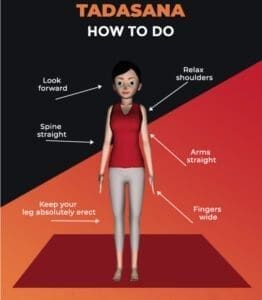
2. Downward-Facing Dog (Adho Mukha Svanasana): Start on all fours with your hands shoulder-width apart and your knees hip-width apart. Press into your hands and lift your hips up towards the ceiling, forming an inverted V shape with your body. Keep your knees slightly bent if needed and your heels reaching towards the ground. This pose stretches the entire body, especially the hamstrings, shoulders, and back.

3. Warrior II (Virabhadrasana II): Stand with your feet wide apart, toes pointing forward. Turn your right foot out 90 degrees and your left foot slightly inward. Bend your right knee, keeping it aligned with your ankle, while extending your arms out to the sides at shoulder height. Gaze over your right fingertips and engage your core. This pose strengthens the legs and opens up the hips and chest
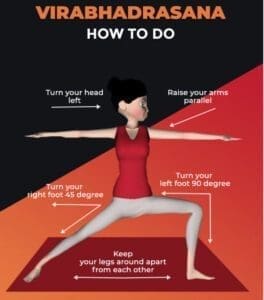
Remember to hold each pose for a few breaths and to repeat on both sides when necessary. As you become more comfortable with these poses, you can gradually explore more challenging variations and sequences.
Breathing Techniques in Hatha Yoga
In Hatha Yoga, breath awareness is an essential component of the practice. The breath serves as a bridge between the body and mind, helping to calm the nervous system and deepen the connection with the present moment. Here are two fundamental breathing techniques commonly used in Hatha Yoga:
1. Dirga Pranayama (Three-Part Breath): Sit in a comfortable position, either cross-legged or on a chair, with your spine tall and your shoulders relaxed. Close your eyes and bring your attention to your breath. Take a deep breath in through your nose, allowing your belly to expand fully. Then, continue to inhale, filling up your ribcage and chest. Finally, exhale slowly through your nose, releasing the breath in reverse order, from the chest to the belly. This technique helps to calm the mind, reduce stress, and increase awareness of the breath.
2. Nadi Shodhana (Alternate Nostril Breathing): Sit in a comfortable position, with your spine tall and your shoulders relaxed. Hold your right hand up and use your thumb to close your right nostril. Inhale deeply through your left nostril, then close it with your ring finger. Release your right nostril and exhale fully through it. Inhale through the right nostril, then close it again and exhale through the left nostril. Continue this pattern, alternating between the nostrils. Nadi Shodhana helps to balance the left and right hemispheres of the brain, promote mental clarity, and purify the energy channels in the body.
Practicing these breathing techniques before or during your Hatha Yoga practice can enhance your overall experience and deepen your connection with your body and breath.
Finding Balance and Inner Peace through Hatha Yoga
One of the main goals of Hatha Yoga is to find balance and harmony within ourselves. Through the practice of asanas, pranayama, and meditation, we learn to cultivate a sense of inner calmness, even in the midst of chaos. Here are a few ways Hatha Yoga can help you find balance and inner peace:
1. Physical Balance: As you practice the various asanas, you’ll notice that many of them require a sense of balance. Whether you’re standing on one leg in Tree Pose or balancing on your hands in Crow Pose, these poses teach us to find stability and focus. As you develop physical balance on the mat, you’ll also find it easier to maintain balance in other areas of your life.
2. Emotional Balance: Hatha Yoga provides a safe space for exploring and releasing emotions. As you move through the poses and connect with your breath, you may uncover emotions that have been stored in your body. By acknowledging and accepting these emotions without judgment, you can create space for healing and emotional balance.
3. Mental Balance: The practice of Hatha Yoga encourages mindfulness and self-awareness, helping to calm the mind and reduce stress. Through meditation and breathwork, you can develop a more focused and balanced state of mind. This can lead to improved concentration, mental clarity, and the ability to respond to situations with equanimity.
By cultivating balance in these different aspects of our being, we can experience a greater sense of inner peace and well-being.
Hatha Yoga for Stress Relief and Relaxation
In today’s fast-paced and stressful world, finding ways to unwind and relax is essential for our overall well-being. Hatha Yoga offers a multitude of techniques and practices that can help you reduce stress and promote relaxation. Here are a few ways Hatha Yoga can help you find peace amidst the chaos:
1. Slow-Paced Movements: Hatha Yoga is known for its slow and controlled movements, allowing you to tune into your body and breath. By moving deliberately and mindfully, you can release tension and stress while promoting a sense of calmness.
2. Deep Breathing: The deep breathing techniques used in Hatha Yoga help to activate the parasympathetic nervous system, triggering the body’s relaxation response. By consciously slowing down your breath and focusing on each inhale and exhale, you can reduce stress and anxiety.
3. Restorative Poses: Hatha Yoga offers a variety of restorative poses that allow you to fully relax and let go. These poses, such as Child’s Pose and Corpse Pose, provide a sanctuary for rest and rejuvenation. By surrendering to gravity and allowing your body to be supported, you can release physical and mental tension.
4. Meditation: Incorporating meditation into your Hatha Yoga practice can be a powerful tool for stress relief and relaxation. By sitting in stillness and observing your thoughts without judgment, you can cultivate a sense of inner calmness and detachment from external stressors.
By making Hatha Yoga a regular part of your routine, you can create a sanctuary of peace and tranquillity, providing a much-needed respite from the demands of everyday life.
Incorporating Meditation into Your Hatha Yoga Practice
Meditation is an integral part of Hatha Yoga, helping to quiet the mind, deepen self-awareness, and cultivate inner peace. Here are some tips to incorporate meditation into your Hatha Yoga practice:
1. Choose a Comfortable Meditation Posture: Find a comfortable seated position that allows your spine to be tall and straight. You can sit cross-legged on a cushion or a folded blanket, or you can sit on a chair with your feet flat on the ground. The key is to find a position that allows you to be relaxed and alert.
2. Focus on Your Breath: Close your eyes and bring your attention to your breath. Observe the natural rhythm of your breath, without trying to control or change it. If your mind starts to wander, gently bring your focus back to your breath. This practice of mindfulness helps to anchor the mind and cultivate a sense of presence.
3. Use a Mantra or Affirmation: If you find it challenging to quiet the mind, you can use a mantra or affirmation to focus your thoughts. Repeat a word or phrase silently in your mind, such as “peace” or “I am calm and centered.” Allow the vibrations of the mantra to penetrate your being and guide you into a meditative state.
4. Start with Short Sessions: If you’re new to meditation, start with shorter sessions of 5-10 minutes and gradually increase the duration as you become more comfortable. Consistency is key, so aim to meditate daily, even if it’s just for a few minutes. With regular practice, you’ll start to experience the benefits of meditation more deeply.
Remember, meditation is not about emptying the mind or achieving a particular state. It’s about observing your thoughts and emotions without judgment, and cultivating a sense of inner stillness and peace. The more you practice, the more you’ll be able to carry this sense of calmness into your daily life.
Tips for Maintaining a Regular Hatha Yoga Practice
Establishing a regular Hatha Yoga practice can be a transformative journey, but it requires dedication and commitment. Here are some tips to help you maintain a consistent practice:
1. Set Realistic Goals: Start by setting realistic goals for your practice. Rather than aiming for long sessions every day, commit to shorter, more manageable sessions that you can realistically maintain. Consistency is more important than duration.
2. Create a Sacred Space: Designate a quiet and clutter-free space in your home for your Hatha Yoga practice
Conclusion:
Hatha Yoga offers more than just physical exercise. It is a transformative journey towards balance and inner peace. By combining gentle movements, conscious breathing, and meditation, Hatha Yoga harmonizes the mind, body, and spirit. It improves strength, flexibility, and mental well-being, while reducing stress. With minimal equipment, beginners can start with basic poses and gradually explore advanced variations. Breathing techniques deepen the mind-body connection. Hatha Yoga empowers individuals to find balance in all aspects of life, promoting emotional and mental equilibrium. It serves as a powerful tool for stress relief and relaxation through slow movements, deep breathing, restorative poses, and meditation. Consistency is vital, even with short sessions, to create a sanctuary of peace and experience the transformative benefits of Hatha Yoga. Embrace the practice, listen to your body, and let Hatha Yoga guide you towards harmony, well-being, and self-discovery.
Disclaimer
The content is purely informative and educational in nature and should not be construed as medical advice. Please use the content only in consultation with an appropriate certified medical or healthcare professional

Exploring Hatha Yoga: 10 Wellness Keys
Have you been exploring the wonders of Hatha Yoga to enhance your mental and physical well-being? You’re in the right place! This guide will delve into ten vital insights to seamlessly integrate Hatha Yoga practices into your day-to-day life. Whether you aim to boost flexibility, maintain equilibrium, diminish stress, or cultivate serenity, these revelations promise to usher you into a realm of unparalleled health and tranquility. So, roll out your yoga mat, seek a serene corner, and prepare to immerse yourself in the transformative world of Hatha Yoga. The Origins of Hatha Yoga Introduction to Hatha Yoga Hatha Yoga is a branch of yoga that focuses on physical postures (asanas), breath control (pranayama), and meditation. It originated in ancient India and has been practiced for thousands of years. Hatha Yoga is often seen as a gentle and accessible form of yoga, suitable for beginners and experienced practitioners alike. Historical Background The roots of Hatha Yoga can be traced back to the 11th century in India, although its principles and practices can be found in the ancient texts known as the Upanishads and the Bhagavad Gita. Hatha Yoga was developed as a means to prepare the body for the spiritual practice of Raja Yoga. It gained popularity in the West during the 20th century when renowned yogis, such as Swami Sivananda and B.K.S. Iyengar, introduced it to the world. Philosophical Roots Hatha Yoga draws inspiration from the philosophical teachings of ancient Indian scriptures, including the Yoga Sutras of Patanjali. The foundation of Hatha Yoga lies in the belief that the body and the mind are interconnected. By working with the body through physical postures and breath control, practitioners can achieve a state of balance, harmony, and self-realization. Benefits of Hatha Yoga Physical Well-being Practicing Hatha Yoga regularly can lead to numerous physical benefits. The asanas (yoga poses) help improve strength, flexibility, and balance. They also promote better posture, relieve tension, and enhance circulation. Hatha Yoga is known to alleviate chronic pain and improve overall physical well-being. Mental and Emotional Health Hatha Yoga not only benefits the body but also has a positive impact on mental and emotional health. The practice promotes relaxation, reduces stress, and calms the mind. Through mindful breathing and meditation, practitioners can gain clarity, improve focus, and develop a sense of inner peace and emotional stability. Spiritual Growth Hatha Yoga provides a pathway for spiritual growth and self-discovery. By cultivating awareness and mindfulness, practitioners can connect with their inner selves and tap into their spiritual essence. The practice of meditation helps quiet the mind, allowing for a deeper understanding of oneself and the world around us. Principles of Hatha Yoga Asanas (Yoga Poses) Asanas are the physical postures practiced in Hatha Yoga. They are designed to strengthen and stretch the body while promoting balance and stability. Asanas help improve flexibility, release tension, and create a sense of physical and mental harmony. Regular practice of asanas can enhance overall well-being and vitality. Pranayama (Breathing Techniques) Pranayama focuses on breath control and regulation. Through various breathing techniques, practitioners can cultivate awareness of the breath and harness its power to calm the mind and invigorate the body. Pranayama helps improves lung capacity, relieves anxiety, and promotes a sense of well-being. Mudras (Hand Gestures) Mudras are symbolic hand gestures used in Hatha Yoga to activate energy channels in the body. By placing the hands in specific positions, practitioners can influence the flow of energy and promote balance and healing. Mudras help deepen concentration, increase vitality, and enhance the overall benefits of the practice. Bandhas (Energy Locks) Bandhas are energetic locks performed during the practice of asanas and pranayama. By engaging specific muscles and controlling the flow of energy, bandhas help redirect and contain vital energy within the body. This can lead to increased physical strength, enhanced mental clarity, and a heightened state of awareness. Secret 1: Importance of Alignment Understanding Proper Body Alignment Proper body alignment is crucial in Hatha Yoga to ensure maximum benefits and prevent injuries. It involves aligning the various parts of the body, such as the head, spine, and limbs, in a way that supports the natural curves and structure of the body. Understanding and practicing proper alignment can optimize the effectiveness of asanas and promote overall body balance. Benefits of Correct Alignment Correct alignment in Hatha Yoga not only reduces the risk of injury but also allows for a deeper and more profound practice. By aligning the body correctly, one can access the full potential of each pose, allowing for better engagement of muscles and improved energy flow. Proper alignment can also enhance the benefits of pranayama and meditation, leading to a more holistic practice. Secret 2: Breath Awareness The Connection Between Breath and Mind In Hatha Yoga, the breath plays a significant role in connecting the body and mind. By bringing focus and awareness to the breath, practitioners can calm the mind, reduce stress, and enter a meditative state. The breath serves as an anchor, helping to center and ground the practitioner in the present moment. Practices for Enhancing Breath Awareness There are various practices in Hatha Yoga that can enhance breath awareness. One such practice is deep diaphragmatic breathing, where the breath is directed into the belly rather than remaining shallow in the chest. Another technique is alternate nostril breathing, which balances the energy flow in the body. By incorporating these practices into your yoga routine, you can deepen your breath awareness and experience the transformative power of the breath. Secret 3: Mindfulness and Meditation Exploring Mindfulness in Hatha Yoga Mindfulness is a state of non-judgmental awareness, where one pays attention to the present moment with acceptance and curiosity. In Hatha Yoga, mindfulness is cultivated through the practice of asanas, pranayama, and meditation. By bringing conscious awareness to each movement, breath, and sensation, practitioners can experience the present moment fully and deepen their connection with themselves. Incorporating Meditation into Your Practice Meditation is an integral part of Hatha Yoga and offers a host of

5 Best Hatha Yoga Poses for Beginners
In 2023, if you’re a beginner looking to try out Hatha Yoga and experience its numerous benefits, you’ve come to the right place! This article will guide you through the 5 best Hatha Yoga poses specifically designed for beginners. Whether you’re looking to improve flexibility, enhance relaxation, or find inner peace, these poses are perfect for starting your Hatha Yoga journey. So, roll out your yoga mat, and get ready to explore these simple yet effective poses that will leave you feeling refreshed, energized, and ready to take on the day! 1. Mountain Pose (Tadasana) Benefits of Mountain Pose Mountain Pose, also known as Tadasana, is a foundational standing pose in yoga that provides numerous benefits for both the mind and body. This pose helps improve posture, strengthens the muscles of the legs and feet, and promotes balance and stability. It also helps to increase body awareness, calm the mind, and improve focus and concentration. Mountain Pose is a great starting point for beginners as it sets the foundation for other standing poses in yoga practice. How to Perform Mountain Pose To perform Mountain Pose, start by standing tall with your feet together or hip-width apart. Distribute your weight evenly on both feet and engage the muscles of your legs. Lengthen your spine and lift the crown of your head towards the ceiling. Relax your shoulders, allowing them to roll back and down. Palms can face forward or rest gently by your sides. Take deep, slow breaths and hold the pose for several breaths or as long as comfortable. Modifications for Beginners For beginners, it’s common to struggle with balance and alignment in Mountain Pose. To make this pose more accessible, you can stand with your feet hip-width apart for added stability. Placing a block between your thighs can also help engage the leg muscles and promote proper alignment. If you have difficulty standing for long periods, you can practice Mountain Pose against a wall for support. 2. Tree Pose (Vrikshasana) Benefits of Tree Pose Tree Pose, also known as Vrikshasana, is a standing balance pose that helps improve concentration, focus, and balance. This pose strengthens the muscles of the legs and feet, improves posture, and increases the flexibility of the hips and groin. Tree Pose also promotes a sense of rootedness and stability, both physically and mentally, making it an excellent pose for beginners looking to build strength and stability. How to Perform Tree Pose To perform Tree Pose, start by standing tall with your feet hip-width apart. Shift your weight onto your left foot and lift your right foot, placing the sole of your right foot on your left inner thigh. If your balance is unstable, you can rest your right foot on your left calf or ankle instead. Bring your hands to your heart center or extend them overhead, reaching towards the sky. Find a focal point in front of you to help with balance and hold the pose for several breaths. Repeat on the other side. Modifications for Beginners For beginners, maintaining balance in Tree Pose can be challenging. You can practice the pose with your back against a wall for support or use a chair to hold onto for stability. Another modification is to place the sole of your foot on your inner calf rather than your thigh. As you build strength and balance, gradually work towards placing your foot higher on your thigh. 3. Downward Facing Dog (Adho Mukha Svanasana) Benefits of Downward Facing Dog Downward Facing Dog, also known as Adho Mukha Svanasana, is a popular yoga pose that stretches and strengthens the entire body. This pose lengthens the spine, opens the shoulders and chest, strengthens the arms and legs, and increases flexibility in the hamstrings and calves. Downward Facing Dog also helps to relieve stress, calm the mind, improve digestion, and energize the body, making it an excellent pose for beginners to include in their practice. How to Perform Downward Facing Dog To perform Downward Facing Dog, start on your hands and knees with your wrists under your shoulders and your knees under your hips. Press through your palms, tuck your toes under, and lift your knees off the mat, straightening your legs. Lengthen your spine, reaching your tailbone towards the ceiling, and allow your heels to sink towards the floor. Engage your core and legs, and relax your head and neck. Hold the pose for several breaths. Modifications for Beginners For beginners, tight hamstrings can make it challenging to keep the legs straight in Downward Facing Dog. You can bend your knees slightly to alleviate any discomfort and focus on lengthening your spine. Placing a block under your hands can also help bring the floor closer to you, making the pose more accessible. If you have wrist issues, you can perform the pose on your forearms instead. 4. Warrior II (Virabhadrasana II) Benefits of Warrior II Warrior II, also known as Virabhadrasana II, is a powerful standing pose that strengthens the legs, opens the hips, and improves balance and concentration. This pose energizes the entire body while building strength and endurance. Warrior II also enhances stability and promotes a sense of empowerment and confidence. It is a great pose for beginners to cultivate strength and resilience. How to Perform Warrior II To perform Warrior II, start by standing with your feet wide apart. Turn your right foot out to the side, keeping your left foot slightly turned in. Extend your arms parallel to the floor, with your right arm reaching forward and your left arm reaching backward. Bend your right knee, aligning it over your right ankle, and gaze over your right fingertips. Keep your shoulders relaxed and your core engaged. Hold the pose for several breaths and repeat on the other side. Modifications for Beginners For beginners, maintaining stability and balance in Warrior II can be challenging. You can widen your stance or decrease the depth of your lunge to make the pose more accessible. Placing your hands on

7 Key Benefits of Practicing Hatha Yoga Daily
Increased range of motion When you incorporate Hatha yoga into your daily routine, you can experience a significant improvement in your flexibility. Regularly practicing yoga poses and stretches helps to lengthen and stretch your muscles, gradually increasing your range of motion. As you progress in your practice, you’ll find yourself able to move more freely and comfortably, whether it’s reaching for objects on high shelves or bending down to tie your shoes. Improved flexibility not only benefits your physical abilities but also enhances your overall quality of life. Improved joint health Hatha yoga is known for its gentle movements and focus on proper alignment, which can have a positive impact on your joint health. The various yoga poses work to lubricate the joints, reducing stiffness and increasing their mobility. This can be particularly beneficial for individuals with arthritis, as it helps to alleviate pain and maintain joint function. By practicing Hatha yoga daily, you can promote the health and longevity of your joints, allowing you to move with ease and comfort. Reduced muscle stiffness If you often find yourself feeling stiff and achy, incorporating Hatha yoga into your routine can provide relief. The slow and deliberate movements in Hatha yoga help to release tension in your muscles and promote relaxation. Regular practice can help to alleviate muscle stiffness, allowing you to move more freely and comfortably. Whether you spend long hours sitting at a desk or engage in physically demanding activities, practicing Hatha yoga daily can help to ease muscle stiffness and promote better overall mobility. Enhanced Strength Increased muscle tone By practicing Hatha yoga daily, you can enhance your muscular strength and tone. The various yoga poses require you to engage and hold different muscle groups, leading to an increase in muscle endurance and strength. As you progress in your practice, you’ll notice that your muscles become more defined and toned. This increased muscle tone not only improves your physical appearance but also enhances your stability and overall body strength. Improved muscle endurance Hatha yoga incorporates a series of poses that require you to hold positions for various lengths of time. By practicing these poses regularly, you can improve your muscle endurance. Holding a pose challenges your muscles, forcing them to work harder and adapt to the demands placed on them. Over time, you’ll find that you can hold poses for longer durations without feeling fatigued, which can benefit your overall physical performance and stamina. Better body posture Poor posture can lead to a wide range of musculoskeletal issues, including back pain and muscle imbalances. Practicing Hatha yoga can help to correct and improve your body posture. The emphasis on proper alignment in yoga poses helps to strengthen the muscles that support good posture, such as the core and back muscles. By regularly practicing Hatha yoga, you can train your body to maintain proper alignment, leading to improved posture and reduced risk of postural-related issues. Stress Reduction Lowered cortisol levels One of the key benefits of practicing Hatha yoga daily is its ability to reduce stress levels. When you engage in yoga, your body releases endorphins, which are natural stress-relieving hormones. In addition, regular yoga practice has been shown to lower cortisol levels, a hormone released in response to stress. By reducing cortisol levels, Hatha yoga helps to promote a sense of calm and relaxation, helping you better manage stress and its negative effects on your physical and mental well-being. Decreased anxiety and depression The practice of Hatha yoga involves deep breathing, relaxation techniques, and mindful movements, all of which have been shown to decrease anxiety and depression. The meditative aspect of yoga helps to calm the mind and promote a sense of inner peace, reducing symptoms of anxiety and depression. Through regular practice, you can experience a greater sense of emotional well-being and improved mental clarity. Improved emotional well-being Regularly practicing Hatha yoga can have a profound impact on your emotional well-being. The combination of physical movement, breathing exercises, and mindfulness helps to release emotional stress, promote relaxation, and increase self-awareness. By connecting with your body, breath, and mind, you can cultivate a greater sense of emotional balance and resilience. Hatha yoga provides a supportive space to explore and process your emotions, leading to improved emotional well-being and a more positive outlook on life. Boosted Energy Increased vitality If you often find yourself feeling tired and lacking energy, incorporating Hatha yoga into your daily routine can help. The gentle physical movements and focus on deep breathing in Hatha yoga help to increase energy levels and promote vitality. Regular practice stimulates the flow of energy throughout your body, leaving you feeling rejuvenated and energized. By dedicating time to Hatha yoga each day, you can recharge your body and mind, allowing you to tackle daily tasks with renewed energy and focus. Improved circulation Hatha yoga includes a wide range of movements that help to improve blood circulation throughout your body. From invigorating standing poses to gentle forward bends, these movements work to enhance the flow of blood, oxygen, and nutrients to your muscles and organs. Improved circulation not only boosts your energy levels but also promotes healthier skin, improves cognitive function, and helps with the overall efficiency of your body’s systems. By practicing Hatha yoga daily, you can enhance your circulation and experience the many benefits it brings. Enhanced breath control Central to the practice of Hatha yoga is the focus on breath control. Through deep breathing techniques, such as Ujjayi breath or alternate nostril breathing, you can learn to regulate your breath and bring awareness to your breath patterns. This conscious control of your breath helps to calm the mind, reduce stress, and increase oxygen intake. By regularly practicing breath control in Hatha yoga, you can improve your respiratory function, boost energy levels, and promote a greater sense of overall well-being. Better Balance and Coordination Improved stability Hatha yoga poses often require you to maintain balance, which can help to improve your stability and prevent falls. Balancing poses

Hatha Yoga: A Beginner’s Guide to Finding Balance and Inner Peace
Hatha Yoga: A Beginner’s Guide to Finding Balance and Inner Peace Welcome to the world of Hatha Yoga, a practice that goes beyond the physical aspects of exercise and delves into the realm of finding balance and inner peace. Whether you’re a complete beginner or someone looking to deepen their understanding of yoga, this guide will take you on a journey of self-discovery and transformation. Hatha Yoga, with its gentle and slow-paced movements, is the perfect introduction to the world of yoga. It focuses on harmonizing the mind, body, and spirit through a combination of asanas (postures), pranayama (breathing techniques), and meditation. By practicing Hatha Yoga, you will not only improve your strength, flexibility, and overall physical well-being, but you will also learn to quiet the mind, reduce stress, and cultivate a sense of inner calmness. So, grab your mat, find a quiet space, and let’s embark on this transformative journey together. Get ready to unlock the power within and discover a whole new level of balance and serenity through the practice of Hatha Yoga. What is Hatha Yoga? Hatha Yoga is a traditional form of yoga that originated in ancient India. The word “Hatha” is derived from the Sanskrit words “ha” meaning sun and “tha” meaning moon, representing the balance between opposing forces. Hatha Yoga aims to find balance and harmony between the physical body and the mind through a series of asanas (postures), pranayama (breathing techniques), and meditation. In the practice of Hatha Yoga, the emphasis is on slow and controlled movements, allowing practitioners to connect with their breath and cultivate mindfulness. Unlike other forms of yoga that may focus on fast-paced movements or intense workouts, Hatha Yoga offers a more gentle and accessible approach, making it suitable for all levels of fitness and flexibility. The Origins and Philosophy of Hatha Yoga Hatha Yoga has its roots in ancient Indian philosophy and is believed to have been developed by the sage Matsyendranath, who was a disciple of Lord Shiva. The practice was later refined and popularized by Swami Svatmarama in the 15th century with the publication of the Hatha Yoga Pradipika, a classical text that serves as a guide to Hatha Yoga. The philosophy of Hatha Yoga is based on the concept of balancing the opposing energies within the body, known as the “ha” and “tha” energies. These energies are represented by the sun and moon, masculine and feminine, and active and passive forces. By harmonizing these energies, practitioners can achieve a state of equilibrium and inner peace. Hatha Yoga also incorporates the principles of mindfulness, self-discipline, and self-awareness. It encourages practitioners to be present in the moment, to observe their thoughts and emotions without judgment, and to cultivate a sense of compassion and acceptance towards themselves and others. Benefits of Practicing Hatha Yoga The practice of Hatha Yoga offers numerous benefits for both the body and mind. From physical strength and flexibility to mental clarity and emotional well-being, the benefits of Hatha Yoga are truly transformative. On a physical level, practicing Hatha Yoga helps to improve strength, flexibility, and posture. The various asanas (postures) in Hatha Yoga work to stretch and strengthen different muscle groups, promoting better alignment and balance in the body. Regular practice can also help to increase blood circulation, improve digestion, and boost the immune system. In addition to its physical benefits, Hatha Yoga is also known for its ability to calm the mind and reduce stress. The combination of slow movements, deep breathing, and meditation helps to activate the parasympathetic nervous system, which is responsible for the body’s relaxation response. This can lead to a reduction in anxiety, improved sleep quality, and an overall sense of well-being. Furthermore, practicing Hatha Yoga can also have a positive impact on mental and emotional health. It can help to increase self-awareness, enhance concentration and focus, and cultivate a sense of inner peace and contentment. By learning to observe and detach from negative thoughts and emotions, practitioners can develop a more positive outlook on life and build resilience in the face of challenges. Getting Started with Hatha Yoga – Essential Equipment and Clothing To get started with Hatha Yoga, you don’t need much equipment or fancy clothing. The most important thing is to have a comfortable and non-slip yoga mat that provides enough cushioning and support for your practice. This will help to prevent any discomfort or injuries while performing the asanas. As for clothing, choose something that allows for a full range of motion and is breathable. Opt for loose-fitting or stretchy clothes that won’t restrict your movements. Avoid wearing anything too tight or constricting, as this can hinder your ability to fully relax into the poses. It’s also a good idea to have a small towel nearby to wipe away any sweat and a water bottle to stay hydrated throughout your practice. Remember, Hatha Yoga is a gentle and slow-paced practice, so there’s no need to push yourself too hard or overexert. Listen to your body and honor its limitations. Basic Hatha Yoga Poses for Beginners Now that you have your mat and comfortable clothing, let’s dive into some basic Hatha Yoga poses that are perfect for beginners. These poses will help you build strength, improve flexibility, and cultivate body awareness. Remember to warm up before starting your practice and to move at your own pace, taking breaks whenever you need to. 1. Mountain Pose (Tadasana): Stand tall with your feet hip-width apart, toes pointing forward. Engage your core, relax your shoulders, and lengthen the spine. Feel grounded and rooted through your feet, imagining them as the foundation of a mountain. Take slow, deep breaths in this pose, focusing on your alignment and the sensation of stability. 2. Downward-Facing Dog (Adho Mukha Svanasana): Start on all fours with your hands shoulder-width apart and your knees hip-width apart. Press into your hands and lift your hips up towards the ceiling, forming an inverted V shape with your body. Keep your knees slightly bent if
